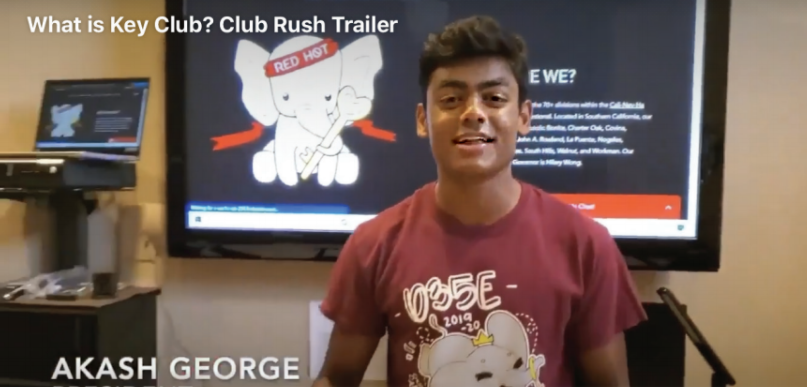Annual club rush goes virtual
In lieu of the usual club rush event, during which students roamed from table to table in the upper quad, Diamond Bar High School’s USB came up with a different way for students to find out about the different extracurriculars on campus–a virtual club rush.
In preparation for the Aug. 31 to Sept. 10 event, Inter-Organization Council Chairperson senior Chloe Chung worked with Activity Director Janna Van Horn to form an IOC committee. The committee made a Google form and contacted the representatives of every club, asking them to submit materials including a promotional club video and a short description of the club. They also made sure to get the word out to all students through their Instagram account and the school webpage.
As for the event itself, the committee made a Google document organized by categories like service clubs, STEM clubs and cultural clubs. Each page contained a description of a club, its promotional video and an interest form. This document was added to the @diamondbarioc Instagram page’s bio, as well as the school website.
“We were able to work together and finished the final Google document as a whole and made this club rush successful,” Chung said.
Key Club, a service club with hundreds of members at Diamond Bar High School, had plenty of promotional material. Junior Brian Hsu made two recruitment videos, and in addition to that, the club’s publicist and junior Katie Choi designed flyers to get the word out on social media. Key Club has already scheduled virtual social events and fundraisers and plans to hold future meetings on Zoom. Key Club president junior Akash George said that the virtual event was more successful because they were able to gain a higher reach with their audience.
“To be honest, the format of this year’s club rush allowed us to recruit more members than ever before and we are very excited for the year,” George said.
Habitat for Humanity, a club that focuses on building homes for underprivileged people and promoting fair housing policies in Pomona Valley, also created a video to promote their club to its potential members. In the video, members of the club shared their mission statement and what a typical service event is like. Their goal during club rush was to recruit more underclassmen and establish a connection with them by having members personally reach out to them.
Although the pandemic has put a stop to almost all in-person activities, Habitat for Humanity continues to plan online fundraisers, social media campaigns and donation drives to prepare for when they resume their activities.
“Since we cannot attend build sites, we are currently focusing on recruiting and posting campaigns during the first semester, so that we can make the second semester even better,” senior historian Rachel Jang said. “Despite the pandemic limiting access to build sites, we are still dedicated to taking on homelessness and California’s housing crisis.”
Another service club, Best Buddies, campaigned through social media flyers and word of mouth.
“Some challenges are that we’ve never had to do this before and that word doesn’t spread as easily about our club but we’re doing the best we can to get past that,” senior friendship coordinator Esther Lim said.
As a club that strives to create friendships with students who have disabilities, Best Buddies’ officers want to host Zoom meetings as a way to allow members to connect with students with special needs. Officers have already gotten in touch with buddies’ parents to schedule future virtual bonding calls.
Neuroscience club, a STEM club striving to teach students about the brain, looked to gain new members by posting flyers and videos to share the club’s goal and activities with potential members.
Although the members aren’t able to dissect brains, which was one of the club’s major activities, officers plan to start hands-on activities as soon as school opens. In the meantime, though, they are still planning to engage members in the club through Kahoot! games and preparation for the Brain Bee competition.
“It’s definitely harder to attract members compared to regular club rush since everything is online, and some students aren’t able to join clubs as easily as before,” junior vice president Elise Kwon said.
Your donation will support the student journalists of Diamond Bar High School. Your contribution will allow us to purchase equipment and cover our annual website hosting costs.









